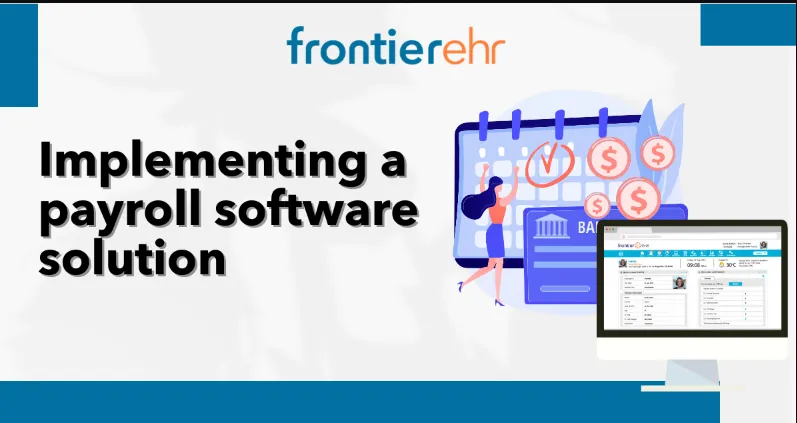
Maximizing Efficiency: Tips for Implementing Online Payroll Software Successfully
Key Takeaways:
- Leverage technology to streamline payroll processes and boost accuracy and compliance.
- Effectively manage the transition to new payroll systems with focused training and support.
- Utilize data analytics embedded in payroll software for informed decision-making.
- Prepare for the future of payroll with scalable solutions and industry trends in mind.
Introduction
The world of business operations is continuously evolving, with companies striving to stay abreast of new technological solutions that promise enhanced efficiency and accuracy. In this context, selecting and implementing an online payroll software becomes a strategic move for businesses seeking to upgrade their payroll processes and improve overall performance. While embracing new technology can be daunting, following structured guidelines can ease the transition and ensure your business reaps the maximum benefits.
The Evolution of Payroll Management
Payroll management’s history is marked by gradual development from manual calculations and record-keeping to automated, cloud-based systems. Today, the advancement of technology allows for a seamless payroll process that offers not only time-saving benefits but also enhances the accuracy and security of sensitive financial data. Transitioning to a well-designed online payroll platform enables businesses to scale operations, automate payroll tasks, and tap into analytics for better decision-making.
Benefits of Modern Payroll Systems
The move towards modern payroll software comes with many advantages for businesses. Key among them is the significant reduction in manual tasks, which not only cuts down on labor hours but also minimizes the risk of human error. Automated updates to tax tables are a further benefit, ensuring businesses remain compliant with the latest tax legislation without manually tracking. Moreover, modern payroll platforms often come equipped with robust security features that protect against data breaches, assuring that employee data is handled with the utmost confidentiality and integrity.
Key Features to Look for in Payroll Software
When shopping around for payroll software, several key features stand out as must-haves for successful implementation. Automation of calculations, ease of use, and integration with existing HR systems can make the transition smoother and more intuitive for users. Customizable reporting features can help businesses draw precise insights tailored to their context. Ensuring that your payroll system is scalable and can adapt to regulatory changes is essential for future-proofing your operations.
Overcoming Challenges in Transitioning to New Payroll Technology
Adopting a new payroll system can present various challenges, often centered around resistance to change and the learning curve of new software. Forbes emphasizes the importance of training during these times, highlighting the need for a well-structured approach to address employees’ concerns and educate them about the new system’s benefits. Providing continuous support and resources is imperative for a smooth transition and acceptance of new payroll technology.
The Role of Analytics in Payroll Management
Incorporating analytics into payroll software heralds a new era of data-driven management. With these tools, businesses can gain deeper insights into salary trends, hour tracking, and labor costs. This information is invaluable for financial planning, enabling businesses to optimize their budgets and manage expenses more effectively. Furthermore, analytics can identify areas for operational improvements, adding strategic value beyond the traditional scope of payroll management.
How Payroll Software Can Influence Employee Satisfaction
The relationship between payroll software and employee satisfaction can be direct and significant. Reliable and accessible payroll systems underpin an organizational culture of transparency and trust. Modern software typically allows employees to access their payment information, tax documents, and benefits with ease, facilitating better personal financial management and contributing to an overall sense of well-being in the workplace.
Payroll Software and Compliance: Staying Ahead of Regulations
Navigating the regulatory environment of payroll can be complex, but modern payroll systems simplify this aspect by staying up-to-date with current laws and tax requirements. This automated approach to compliance reduces the administrative burden and minimizes the risk of penalties associated with non-compliance. Moreover, many systems offer capabilities to handle multinational payroll regulations, which is invaluable for businesses operating across borders.
Future Trends in Payroll Software
The payroll sector will continue to evolve with advancements in technology. According to Finextra’s article, integrating intelligent algorithms and AI into payroll systems suggests that future solutions will be more predictive and proactive, giving businesses a competitive edge through refined automation and analytics capabilities. The increasing adoption of mobile payroll functionality also indicates a shift towards greater flexibility and user-centric design.
Making the Business Case for Investing in a Modern Payroll System
Building a strong business case for adopting a new payroll system requires a balanced presentation of its immediate and long-term benefits. Outline the potential for cost savings, productivity improvements, and aligning payroll operations with strategic business goals. Convincing decision-makers to invest in modern payroll technology often hinges on demonstrating a clear return on investment and detailing how it can catalyze broader organizational advancements.
Choosing the Right Payroll Solution for Your Business
Your business’s specific needs and circumstances should guide the decision to implement a particular payroll software. Consider factors such as the size of your workforce, industry-specific requirements, and growth trajectories. Conducting thorough research, taking advantage of trial offers, and evaluating customer support and service levels are all prudent steps in selecting a payroll system that will serve your business well into the future.




